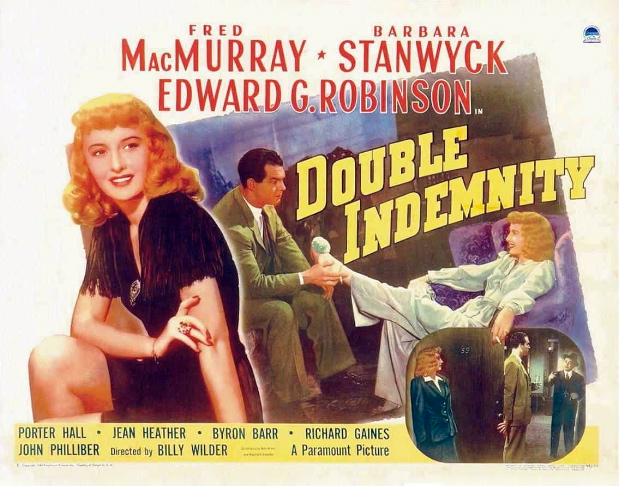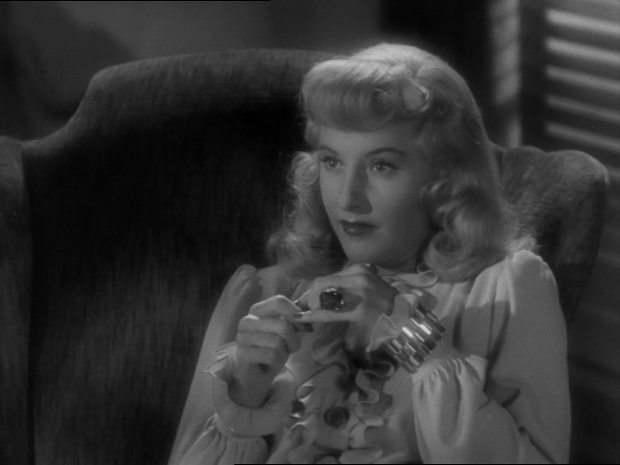
Tony
D'Ambra of the ever useful films noir web site posted an interesting
comment about my Film Noir Master List which I'm eager to respond to:
Tony wrote:
I doubt you will welcome this comment, but here goes.
I'm delighted by all thoughtful comments!
He continued:
I don't see the point of your classification system: it has meaning for
you only and no film can ever be categorised to such a degree.
I realize that my list violates convention, but others have found it
useful, if only as a provocation to further thinking about the
subject. It's primarily intended to provoke a new conversation about film noir, which in my opinion has gotten to be such a vague term that it's losing its usefulness.
And Tony wrote:
For example, there is wide agreement that Wilder's Double Indemnity
is an elemental film noir, yet you describe it as a “domestic noir”?
Neff is an unmarried loner and Phyllis an amoral gold-digger whose
marriage was a sham from day one, so how does domesticity gone bad come
into it? There is “no moral confusion” or “existential dread”: both
protagonists are motivated by greed and each has no scruples when it
comes to making sure that only one of them makes it to the end of the
line. Marriage has nothing to do with the dramatic imperative of the
plot. Remember Phyllis murdered Dietrichsen's first wife, so she could
marry him for his money. Neff was ready to be seduced and she knew it:
this is the essence of the noir paradigm of the femme fatale, which has
little to do, if it ever to did, with the role of woman in WW2 and its
aftermath. Remember, the great noir novels by Hammett and Cain, were
written before WW2.
Domestic noir, to me, from Double Indemnity to Sunset Boulevard,
is characterized primarily by a rancid view of domestic life, and
especially married life. It's not about good marriages gone bad
— instead it reflects a jaundiced view of the domestic realm, sees it
as corrupt, no longer viable, infected by the moral chaos, the
existential bewilderment, of the wartime and post-war world.
Double Indemnity takes place primarily in middle-class homes and offices — not in the typical urban jungle of the classic noir, the labyrinth of the dark city. In the domestic noir, the existential dread symbolized by noir's dark city has penetrated the “normal” world, transformed
it. Both traditions are dealing with the same existential dread,
but viewing it from different angles — different enough to constitute
two distinct traditions.

Phyllis Dietrichsen is indeed a femme fatale, one of the most fatale in all of movies, but the presence of a femme fatale doesn't automatically make a film noir, anymore than the lack of one excludes it from the category. The femme fatale in the person of the vamp was a staple of silent cinema, featured in films we would never think of calling noir, and many classic films noirs have heroines who save the protagonist.
Finally, I would argue that pulp fiction, hardboiled fiction, from the
20s and 30s is something different from the wartime and post-war films that are, to me at least, the heart of the film noir tradition. Film noir
drew on that fiction, just as it drew on the 30s-era crime melodrama
and conventional detective fiction, but it became something new.
My underlying argument in all this is that we lose sight of what made film noir
new and distinct when we confuse it with its antecedents and with other
films that were dealing with the same cultural anxieties in different
ways and in different contexts.

Excellent riposte Lloyd. Now I see your angle on “domestic noir” as a valid label, and we can agree to disagree on applying categories.
Always useful to hear opposing views from someone who knows a subject well and has thought about it a lot. It helps me clarify my own thinking, and with luck inspires others to think about the subject in new ways.
Many thanks!